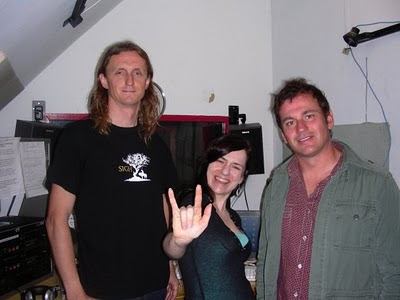Is it me? One sounds like the other, to my ears:
Here’s a new track from duo Crystal Castles, premiered by the BBC (thanks to AUX for the heads-up):
And here’s a track from The Virgin Prunes that’s well over two decades old:
Fill in the holes between now & then; Einsturzende Neubaten, Nine Inch Nails, KMFDM, Massive Attack, and Neu! all come to my mind, but I’m sure there are way more. (Do feel free to leave suggestions in the comments section.) The influence and importance of these bands, seminal in the industrial-meets-electronica-meets-new-forms-of-rock-and-roll arena can’t be overstated, and yet so often, the names and faces and songs are forgotten.
Tying them all together with contemporary sounds makes for fascinating musical thread-spotting, but it’s equally interesting to see just how deeply these threads twist and spiral through the visual art realm; all these bands have a strong aesethetic (people today might use that over-used, tired term “brand”) where the worlds of painting, photography, video, and filmmaking are every bit as vital as the music.
Not everything is pretty, nice, and easily digestible here. I like that. There’s something about viewing something surreal, uncomfortable, and confusing that is hugely refreshing -it’s like aerobics for a brain more used to the pablum of dependable narrative arcs and tidy conclusions. I like the raucous visual attacks of Neubaten, NIN, and the Prunes, KMFDM’s Soviet-meets-Pop paintings, and Massive Attack’s embrace of experimental filmmaking partnered with their deeply atmospheric, unsettling sounds. So it makes sense that I was struck by the accompanying photo of Crystal Castles on the AUX site, which reminded me of Godard, Helmut Newton, and Wolford all at once. Nicely done.
Appropriation, influence, mainstream, underground -all these labels (and their concomitant definitions) are melting and forming a kind of morphed culturo-sonic Frankenstein, simultaneously scaring, shocking, delighting, and inspiring.
2010 Music: incredible.
Now, if only the major labels would get on the inspiration train.

